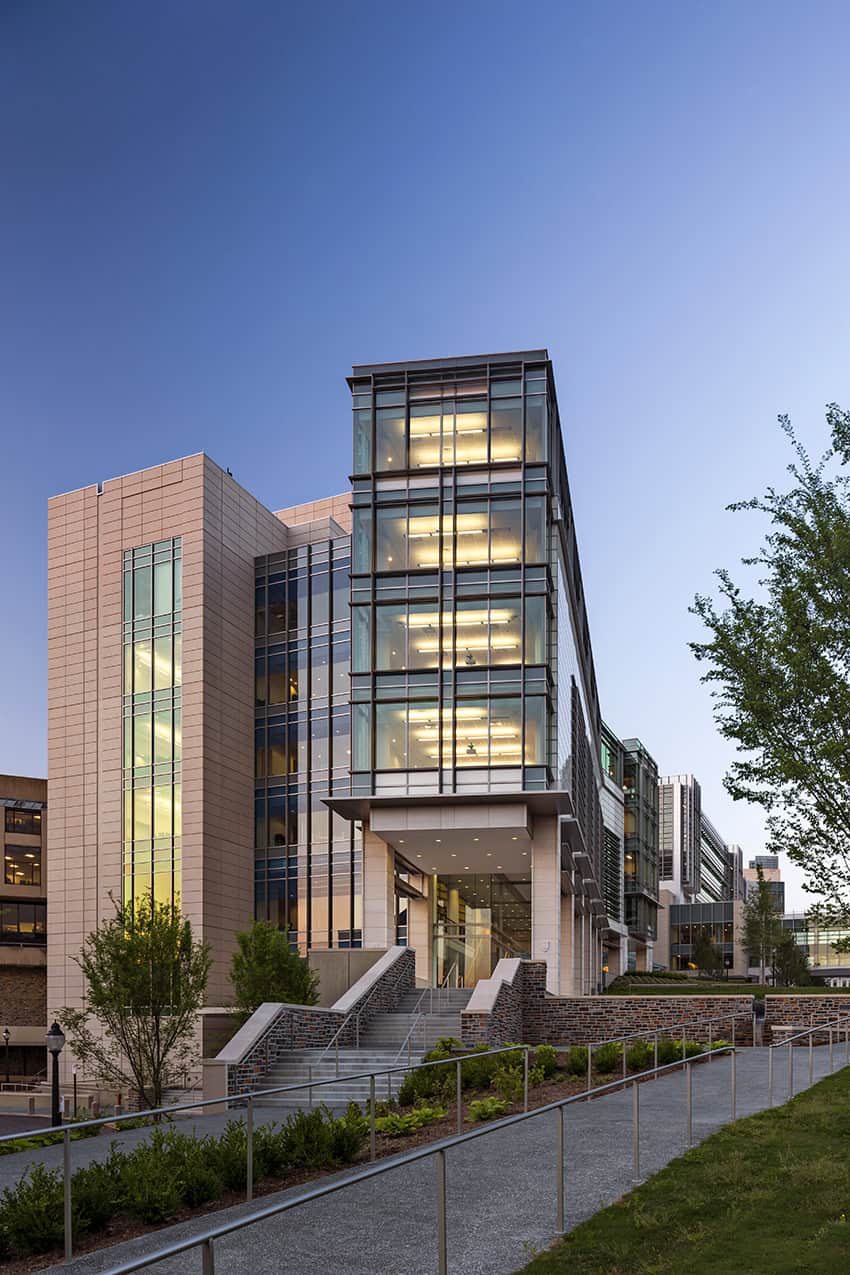Durham, NC – The S/L/A/M Collaborative (SLAM) recently announced that The Mary Duke Biddle Trent Semans Center has received LEED™ Gold certification. This 115,000sf learning center, designed by SLAM in association with Duda Paine Architects, serves as Duke University’s School of Medicine and is the first building on the medical center campus to receive this level of certification.
The project team’s dedication and commitment to environmental stewardship went above and beyond the client’s original request for Silver certification and were granted 98% of the total attempted points for LEED Gold certification.
The newly-constructed pedestrian pathway surrounding the building not only energizes and connects the medical campus, but enhances the outdoor environment in an attractive and sustainable way. More than half of the site was restored with adaptive plants and grasses that are native to the southeast region and minimize water use. The site’s terraced rain garden captures all of the storm water run-off from the adjoining roofs and surface run-off, serving as both water retention and water filtering steps before being recaptured into the campus storm water system.
One of the team’s goals was to reinforce the connection to the outdoors through ample daylight and views throughout the building.
The building’s East-West orientation allows for a long Southern façade that incorporates horizontal light shelves to diffuse direct sunlight into deep penetrating daylight, while the Western façade utilizes vertical fins to convert direct sunlight into deep penetrating diffused daylight; reducing overheating and saving energy by reduce lighting loads.
In an effort to further enhance the learning environment the mechanical system can sense occupancy and monitor CO2 levels to control air flow with variable speed drives to reduce energy consumption and improved indoor air quality. Low emitting, local, rapidly renewable and recycled materials were utilized to further enhance occupant comfort and reduce the impact on the environment.











